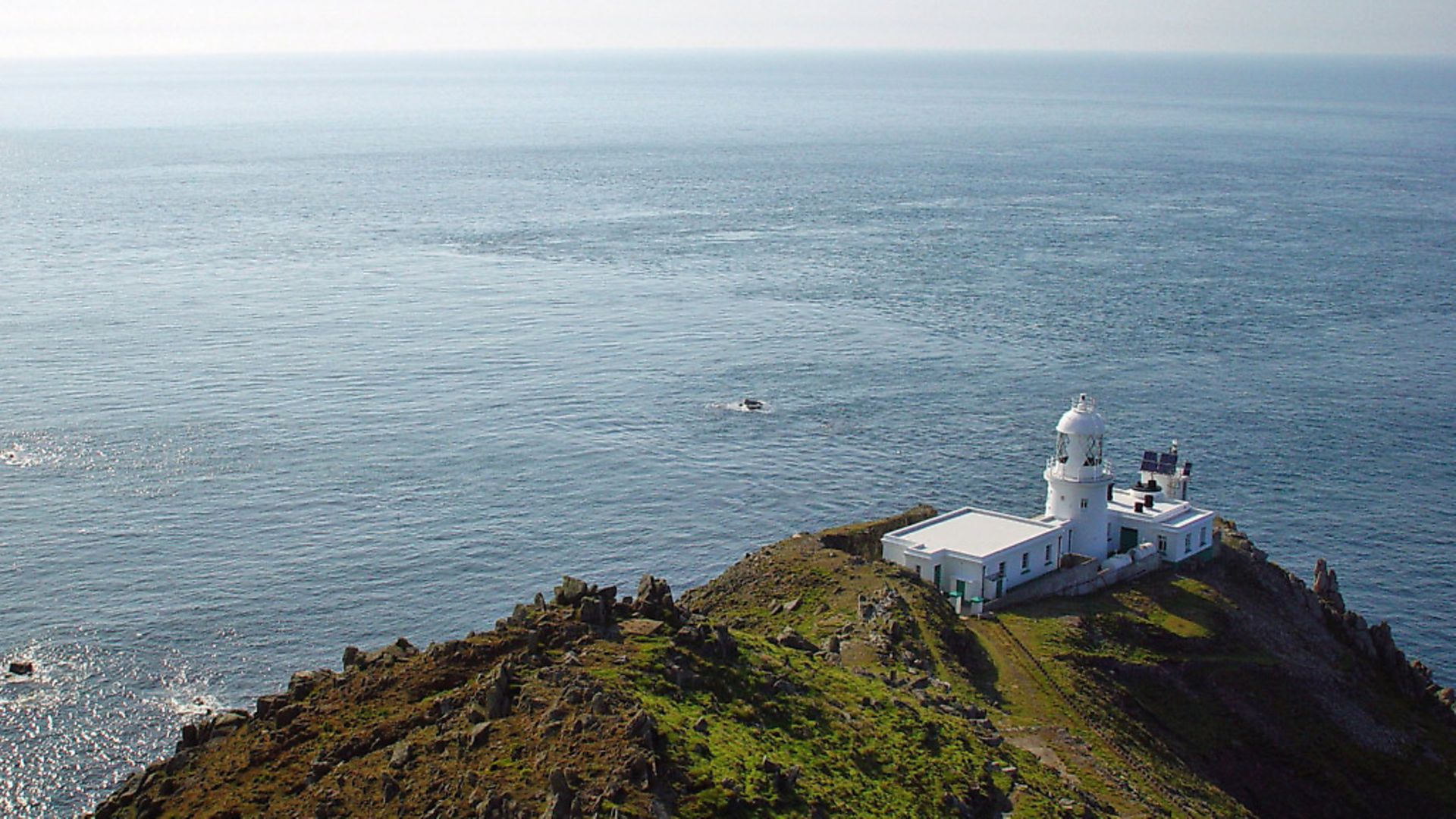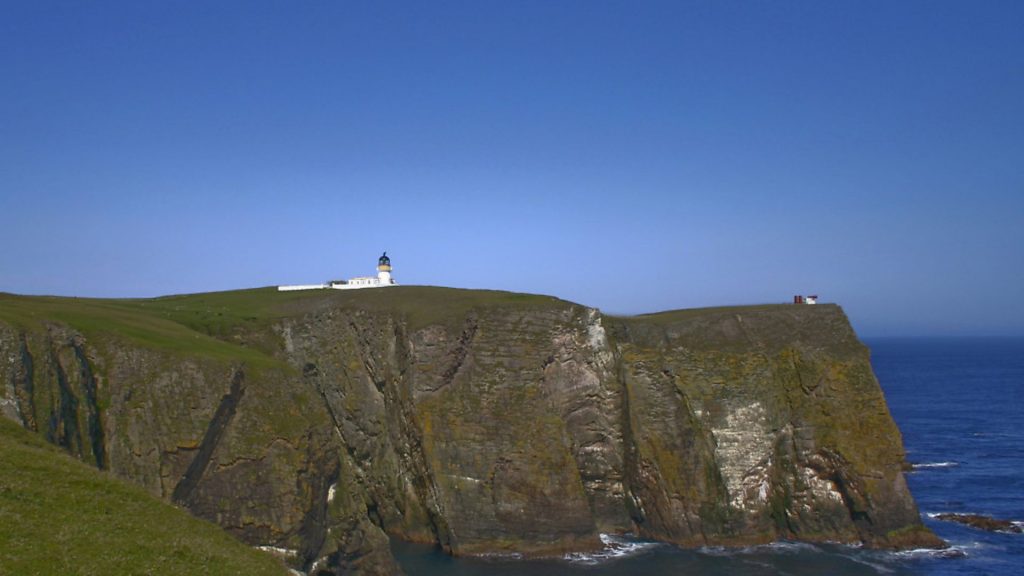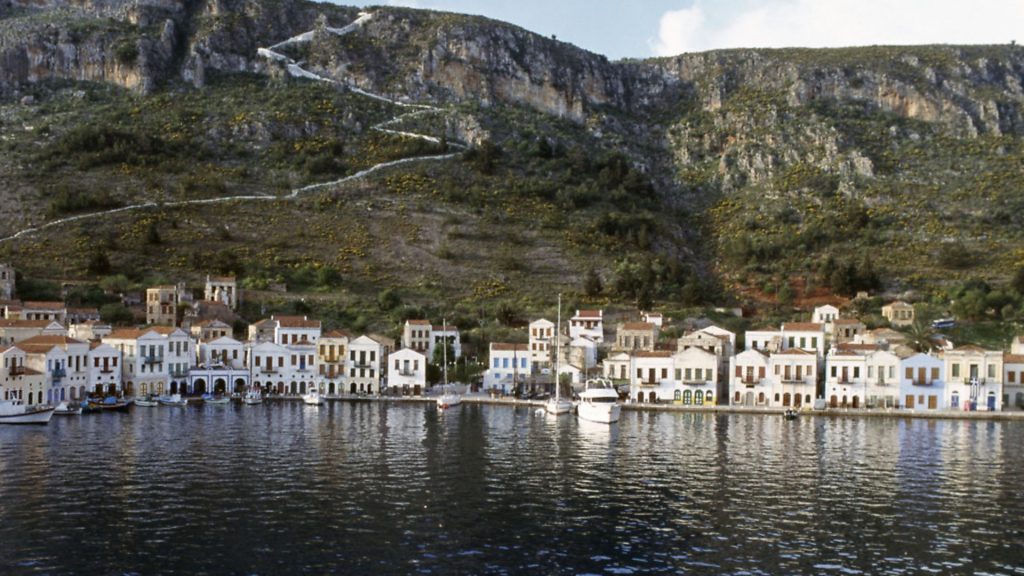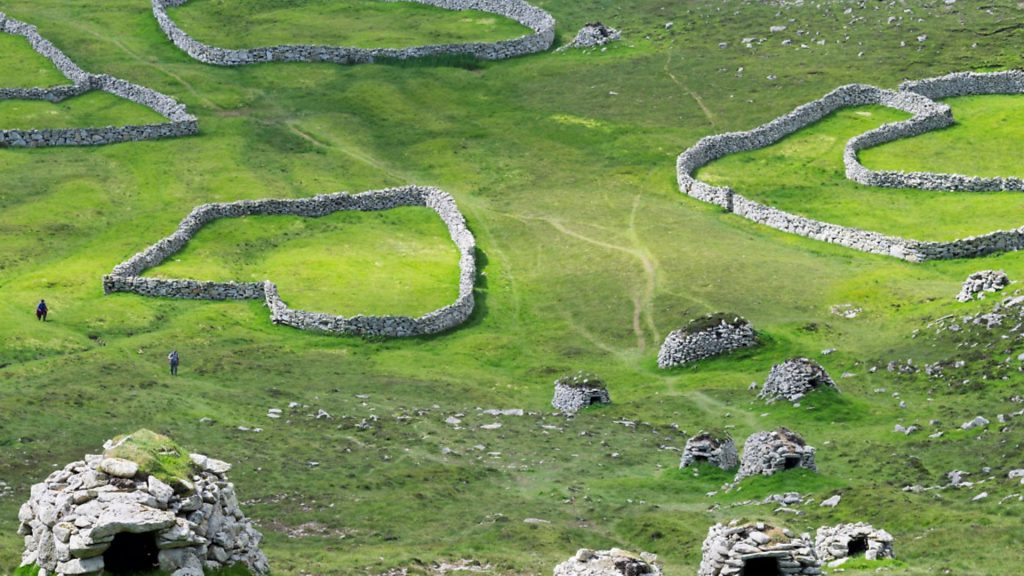
From the North Atlantic to the Mediterranean, the continent’s coasts are dotted with ultra-remote offshore communities. STAN ABBOTT asks whether they can survive in the modern age.

“Safety, a sense of community, opportunity.” Mati Ventrillon chooses her words carefully as she seeks to explain why she and her architect partner, Joe, set up home on the UK’s remotest island with their 18-month-old son 12 years ago.
Fair Isle sits at the junction of the North Sea and the Atlantic Ocean, roughly midway between Orkney and Shetland and 24 miles from the latter. Its links to the outside world are via an eight-seat air service to Tingwall, on Shetland, or on the Good Shepherd ferry, which plods to and from Sumburgh in two-and-a-half hours. Both services are at the mercy of the elements and both are heavily subsidised by Shetland Islands Council.
The island has just 55 permanent residents but it also has a benign and innovative landlord in the Scottish National Trust, and boasts a thriving knitwear industry, and visiting cruise ships, whose passengers are happy to buy that knitwear.
Against that backdrop, Mati – a French citizen brought up in Argentina – was able to establish her internet-based custom knitwear business, based on the local tradition.

Fair Isle does not fit the classic very small island model – its population features all age brackets and there’s an active and relatively diverse economy. There is a waiting list for the limited number of crofts, so it is technically now full.
Until recently, a major driver of the modest tourism industry was the internationally renowned Bird Observatory, a magnet for visiting birders and twitchers from all over the UK and beyond.
But, as with all small islands, infrastructure and services are compromised and people may, consequently, have to turn their hand to several jobs. I have seen the airport fireman become baggage handler, before turning up behind the bar at the Bird Observatory and then among the crew on the Good Shepherd.
In March this year, the Bird Obs, as it’s known – which was rebuilt in 2010 and also served as a community hub and local pub – was destroyed in a catastrophic fire that was beyond the capacity of the local service, and too far from the mainland for timely intervention.

For crime novelist Ann Cleeves – creator of the BBC’s Shetland crime series – Fair Isle and the Bird Observatory hold great affection. It was there that she met her late husband, Tim, who died in December 2017. She sees a powerful sense of community as the driving force behind Fair Isle relative success. “Within a day of the fire they had found the warden and his family somewhere to stay,” she says. Now she is working with the trust behind the observatory to try to replace as much as possible of its extraordinary library, beginning by gifting Tim’s own extensive ornithological collection.
For some knitwear specialists selling direct to visitors, the loss of some staying visitors until the Bird Obs is replaced may pose challenges, but, says Cleeves, with confidence: “They will make it work as a community.”
Around 200 miles to the north-west, on the Faroese island of Skúvoy, Tummas Frank Joensen sees less reason for optimism about his own community.
“After the war there were 167 people living here,” he says ruefully, as he serves a traditional Faroese lunch, made by his wife, Elisabeth.
Even Elisabeth isn’t here today: she’s away in Copenhagen looking after the grandchildren. “There were six farmers, now there are three,” he continues. No-one seems sure if there are 30 residents on the island (the ‘official’ figure) or if the number is nearer 20, or fewer. Family members come and go, but there’ll probably always be more than 1,000 sheep.
Skúvoy, like a handful of other communities in an archipelago of 18, is in decline – despite a commitment to connectivity that is so strong the Faroese government recently spent £12 million blasting a tunnel through a mountain to connect a village of 12 souls.
Skúvoy is more typical of small islands across Europe, or indeed the world. Populations teetering around the critical number required for an insular population to be viable, as opposed to self sufficient. At least it does have some basic services: a part-time shop, accommodation for tourists; a subsidised helicopter service and a ferry a few times daily to its larger neighbour, Sandoy.
But, when Sandoy and its southernmost neighbour, Suðuroy, are linked in the next few years to the Faroese mainland by sub-sea tunnel, it’s feared that Skúvoy and other smaller islands in the archipelago will be bypassed.
Once small islands were important service stations on the great highways that were the world’s oceans. Now they are isolated communities, hard to reach in all but the virtual world.
But, say the experts, it’s about more than just the size of the population. Harvey Armstrong, emeritus professor of economic geography at the University of Sheffield, was involved in comparative study of small remote islands in the UK and Greece and identifies a near universal trend, which he describes as a “double demographic hit”.
“Young people tend to leave and don’t come back, so you are left with both a falling and an aging population,” he said.
“So, unless they have got into mass tourism, or high value-added ecotourism, or perhaps oil or salmon farming, small islands have been losing population as young people head for the major centres.”
As more people leave, so providing basic services, especially health, becomes increasingly challenging for the authorities.
Only slightly less remote than Fair Isle is Foula, 20 miles to the west of Shetland’s mainland. Home to 30-plus people, the island, whose name comes from the Norse for ‘bird island’, was the last place in which the old Norse language of Norn was spoken and islanders still celebrate Christmas later than the rest of the country, in line with the old Julian calendar.
Magnus Holbourn, as ‘factor’, is responsible for managing the crofts for the family on the dramatically beautiful island, acquired by his great grandfather, Ian, 120 years ago after he fell in love with it.
Magnus also runs Foula Wool, exporting naturally coloured yarn from the island’s own breed of Shetland sheep, as well as bed and breakfast and self-catering accommodation for visitors in search of arguably the UK’s most solitary away-from-it-all break.
He is unperturbed by questions about the viability of small, remote communities. “Foula has followed a sine wave population curve over the last 50 years. The population was low and then island folk married newcomers and had children.
“The population went up, then the children left and it went down again. At least one child from each of those families has returned and started their own family and the population has gone back up to a similar level as when I was a child. The average age on Foula is now mid-to-low 30s.”
Of the future, he says: “You have to keep hold of your roots, but be open to change at the same time. It’s really about flexibility, that the most important word on a remote island.”
Norway boasts more than 50,000 islands and, as a rich country, its government is committed to supporting offshore communities.
But that does not prevent some becoming, eventually, an island too far. The rocky islets of Sør-Gjæslingan are an hour or more by fast RIB from the little port of Rørvík, halfway up the country’s west coast. Once the country’s biggest and most important fishing port south of the Arctic Circle, today Sør-Gjæslingan is, effectively, a museum. The cod drying racks stand empty, the village shop is as it was the day the last customer shut the door decades ago. In 2010, it was designated a protected cultural site, open to day-trippers in summer and, for those who can afford to rent one of the lovingly preserved houses and bring their own chef, to small overnight parties.
Nearly 500 miles south, on the island of Landøy, off Norway’s sunny southern coast, Øystein Steinslas and his wife, Liv, pose outside the old barn beside their neat home on the island’s main street. The homes and gardens are all neatly tended and there are children’s toys in the sandpit outside the village school. But Landøy is now a summer-only island, and the other homes await the long summer days when the children are off school.
Øystein and Liv are here more than most: the immaculately restored barn is now a living museum, featuring bits and pieces that Øystein has collected to recall the days when this was another thriving fishing community. Liv, for her part, looks after the school, unchanged since the last class closed years ago. “It feels important to ensure that all the island’s history isn’t just forgotten,” she says.
Greece boasts 114 inhabited islands of varying size – a figure that has fallen from 150 in 1951, according to Thansis Kizos, professor of rural geography, at the University of the Aegean, on Lesbos. Many are very small indeed, though winter populations of fewer than 100 may swell to more than 500 in summer.
But neither numbers nor transport links define success or decline. “However small or big and however far away, islanders will always say they want more direct links,” he says.
But the real issue is human capital, he adds. “You can always import economic capital, but not human capital. You can’t make the infrastructure work without having people to live there.
“And to sustain this infrastructure and services you need dedicated and qualified people who are willing to go and live there.”
Although the economic crisis in Greece led to an end to lower VAT rates on most islands, currently, the smallest island communities are supported indirectly through heavily subsidised fares for residents. And, although migration rates from the islands has slowed since 1981, Kizos adds: “The population is aging rapidly in most of the islands and some of them now have among the most aged populations in Greece.”
Some, however, are bucking the trend – in particular islands like Kastellorizo, the country’s most easterly territory – that are in the front line in the ongoing dispute with Turkey over resources in the Aegean Sea.
“The priority is to keep on the smaller islands the people who are living there now and, if they manage to do that for 10 or 15 years, we will have a new population growing up,” as Kizos says.
In the UK, the islands of St Kilda, evacuated in 1930, illustrate what abandonment looks like. Despite being a double World Heritage Site, this has been effectively a missile testing range since 1957. It is also a monument to the stoic individuals who survived for more than 2,000 years, mostly on seabirds and their eggs.
St Kilda, like Fair Isle, belongs to the National Trust for Scotland, and there are many islands in similar charitable ownership around the UK coast. Lundy Island, off the North Devon coast, is self-sustaining but has no indigenous population – its 30 or so ‘residents’ rarely put down permanent roots.
The island is owned by the National Trust and those who live there are employed by the Landmark Trust to look after its nature reserves and visitor facilities.
Curiously, there seems to be a general acknowledgement that small islands are a good thing, even if no-one is keen to attach a specific price worth paying, nor has a failsafe recipe to assure their future.
“At that time it was just an opportunity,” says Mati Ventrillon, of settling on Fair Isle. “My son was only a year-and-a-half and there was the prospect of him being able to grow up in a safe place.”
On Foula, Magnus Holbourn adds: “The smaller more remote inhabited islands are the rich, fine details in a bigger tapestry that draw people’s attention and they contribute in a disproportionate and positive way.
“Foula has a population of unique un-modernised Shetland sheep, a snapshot of the breed as it was 200 years ago. Without a viable population of people to tend these sheep, can we maintain this important genetic resource?”
The Scottish government is currently consulting on a ‘national islands plan’, with a view to better supporting such communities. Steven Coutts, leader of Shetland Islands council – which spends £19m a year (more than £800 per resident) on supporting inter-island air and ferry links – says: “We need to see that plan result in flexibility and meaningful resource provision to ensure our island communities can thrive.
“Island living is at times idyllic but also challenging. Some of our islands can be without transport connections for a number of days at a time. Having enough resources and people on island to ensure adequate resilience is very important and there needs to be a recognition that providing services in a small island community can be more challenging and costly.
“There is a need for adequate funding to provide for reliable transport links and we also need fast, resilient and secure digital communication links. This can overcome some, not all, of the challenges of physical distance to markets and services.”
In the Faroe Islands, Magni Arge, of the ruling coalition speaks of an ongoing commitment by governments to support the cultural heritage of smaller villages and islands. He feels a sense of pride that two families now earn a living on cliff-bound Stóra Dímun, usually accessible only by helicopter. The cost is unclear, as the helicopter fleet is essential to providing the search and rescue function.
In Greece, Thansis Kizos says that larger islands like Mykonos and Santorini demonstrate how an influx of well-educated incomers can deliver innovation and leadership. However, abandonment or ‘summerisation’ of some smaller islands, may be inevitable, he concedes. “But if you asked me which islands we should depopulate, I would be very hard pressed to say.”









